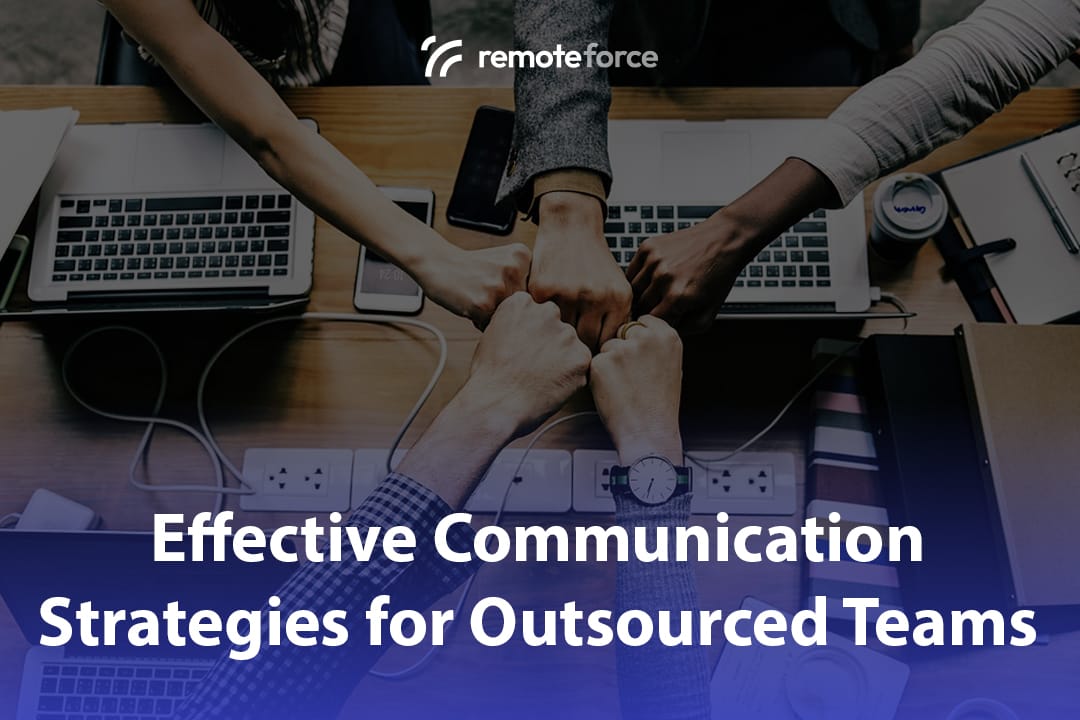The single greatest point of failure in an outsourcing partnership is rarely a lack of technical skill. It’s not the web developer’s coding ability, the digital marketer’s campaign knowledge, or the accountant’s financial acumen.
It’s communication.
Managing an outsourced team means bridging a “double gap”: the physical gap (remote work) and the organizational gap (a different company culture). Without an intentional communication strategy, this gap widens, leading to misunderstandings, missed deadlines, and misaligned goals.
Effective communication is not an accident; it’s a structured process. Here are the essential best practices for communicating effectively with your outsourced team.
1. Establish a Unified “Tech Stack” and a Single Source of Truth
Confusion starts when conversations happen in too many places. Don’t force your in-house team to use one set of tools while the outsourced team uses another.
- For Project Management (The “What” and “When”): Standardize on one platform like Asana, Jira, or Trello. All tasks, deadlines, files, and status updates must live here. This is your “single source of truth” for project progress.
- For Real-Time Chat (The “Quick Questions”): Integrate your outsourced team directly into your primary communication tool, like Slack or Microsoft Teams. Create shared channels (e.g.,
#project-marketing). This makes them part of the daily conversation, not an isolated email address.
2. Create a Formal Communication Plan (The “Rhythm”)
Ambiguity is the enemy. A formal plan removes guesswork and ensures everyone is aligned.
- Daily Check-ins: For active projects, a 15-minute daily stand-up (via video) is non-negotiable. It’s not for status reporting (that’s what Asana is for); it’s for identifying and removing roadblocks.
- Weekly Tactical Meetings: A 1-hour weekly meeting to review the past week’s performance (KPIs) and plan the upcoming week’s priorities.
- Monthly/Quarterly Reviews: A Quarterly Business Review (QBR) to discuss high-level strategy, business goals, and the overall health of the partnership.
3. Be Proactive and Over-Communicate (The “No Surprises” Rule)
When you’re remote, you must replace proximity with proactivity.
- Proactive Updates: Encourage your outsourced team to provide updates before you have to ask for them. A simple end-of-day summary (“Here’s what I finished, here’s what I’m working on tomorrow, here’s where I’m stuck”) builds immense trust.
- Flag Roadblocks Early: The worst time to hear about a problem is on the deadline. Create a culture where flagging a risk early is seen as a positive, responsible action, not a sign of failure.
4. Master the Art of Asynchronous Clarity
Most communication will be asynchronous (written). Vague requests are a recipe for disaster.
- Bad Request: “Hey, can you fix the homepage? It looks weird.”
- Good Request: “Hi team. I’ve noticed a bug on the homepage. The Goal: The CTA button is not aligned on mobile (see screenshot). The Task: Please align the button to the center. The Deadline: EOD today, as it’s affecting our conversion rate.”
A clear asynchronous request includes:
- Context (The “Why”): Why does this matter?
- The Task (The “What”): What is the specific action?
- The Deadline (The “When”): When is this needed (including time zone)?
- Visuals: Use screenshots, annotated images, or short videos (like Loom) to explain complex ideas.
5. Embrace Video and Turn Cameras On
Trust is built on human connection. Email and chat are terrible at building rapport.
- Video by Default: Make all scheduled meetings video-first.
- Cameras On: Encourage a “cameras on” culture. Seeing facial expressions and body language eliminates misunderstandings and builds a personal connection that text-only communication lacks.
6. Be Mindful of Culture and Time Zones
You are working with professionals from a different background.
- Time Zone Awareness: Acknowledge the time difference. Use scheduling tools that show overlapping hours. Clearly define “End of Day” for all deadlines.
- Cultural Sensitivity: Be aware of different communication styles. Some cultures are very direct with feedback, while others are more indirect. Be patient and strive for clarity above all else.
Conclusion: Communication is a Shared Responsibility
While the client must set the stage for good communication, a world-class outsourcing vendor prepares their team for it. The best providers (like RemoteForce) don’t just find talent; they find communicators.
They rigorously screen for proactive communication, accountability, and cultural adaptability before you ever meet the team.
At RemoteForce, our digital marketers, legal experts, and developers are trained to integrate seamlessly. We build communication excellence into our service, ensuring that you’re not just hiring an expert, but a true partner who knows how to collaborate.





